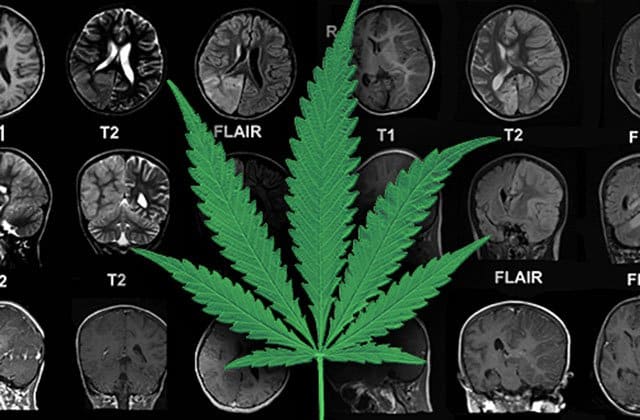Blog
The Promising Role of Cannabis in Treating Epilepsy and Seizures
Epilepsy is a neurological disorder that affects millions of people worldwide. It causes recurrent seizures, which are sudden and uncontrollable electrical disturbances in the brain. These seizures can have debilitating effects on a person’s life, making it difficult to perform day-to-day tasks and leading to social stigma. While there are several conventional treatments available, many people find them ineffective, and some even experience severe side effects. This has led to the exploration of alternative therapies such as cannabis, which has shown promising results in treating epilepsy and seizures. In this blog, we will explore the role of cannabis in treating epilepsy and seizures.
Understanding Epilepsy and Seizures
Epilepsy is a chronic neurological disorder that affects millions of people worldwide. It is characterized by abnormal electrical activity in the brain that can lead to seizures. Seizures can cause a wide range of symptoms, including convulsions, loss of consciousness, and altered senses. Epilepsy can be caused by many different factors, including genetic factors, brain injuries, and infections. The severity and frequency of seizures can vary widely, and some people with epilepsy may experience hundreds of seizures each day, while others may only have occasional seizures. Epilepsy can be a debilitating condition that significantly impacts a person’s quality of life, making it difficult to work, socialize, or perform everyday activities. As such, there is a significant need for effective treatments for epilepsy, and recent research has shown that cannabis may be a promising option.
Conventional Treatments for Epilepsy and Seizures
When it comes to treating epilepsy and seizures, conventional treatments such as anti-epileptic drugs (AEDs), surgery, and implantable devices like vagus nerve stimulators have been the primary methods of treatment. AEDs work by altering the brain’s chemistry to reduce the frequency and severity of seizures. However, they come with several side effects, including dizziness, fatigue, nausea, and memory problems. Furthermore, some people may not respond well to AEDs and require alternative treatments.
In severe cases of epilepsy, surgery may be an option. The most common surgical procedure is the removal of the part of the brain responsible for causing seizures. This procedure can be effective, but it carries significant risks, including infection, bleeding, and brain damage.
Implantable devices such as vagus nerve stimulators are also an option for some people. These devices work by sending electrical impulses to the brain to prevent seizures. However, they are invasive and require surgery to implant, and the side effects can include voice changes, coughing, and throat pain.
While these treatments have been the go-to for treating epilepsy and seizures, they are not always successful and can have severe side effects. Therefore, there is a need for alternative treatment options, which is where cannabis comes in.
The Potential of Cannabis in Treating Epilepsy and Seizures
The potential of cannabis in treating epilepsy and seizures is an area of growing interest among researchers and medical professionals. Cannabis contains several active compounds, including cannabinoids, that have been found to interact with the body’s endocannabinoid system, which plays a key role in regulating various bodily functions, including the nervous system.
Studies have shown that some cannabinoids, such as THC and CBD, have therapeutic properties that can help alleviate the symptoms of epilepsy and seizures. THC, for example, has been found to have anticonvulsant properties, which means that it can help prevent seizures from occurring. CBD, on the other hand, has been found to have several potential therapeutic effects, including anti-inflammatory, analgesic, and anxiolytic properties.
In recent years, there has been growing interest in using cannabis as a treatment for epilepsy and seizures, particularly in cases where traditional medications have failed to provide adequate relief. While the research in this area is still in its early stages, there is growing evidence to suggest that cannabis may be an effective treatment for some forms of epilepsy and seizures. However, it is important to note that cannabis is not a cure for epilepsy and should only be used under the guidance of a medical professional.
Types of Cannabinoids and Their Effects
Cannabis contains a variety of compounds known as cannabinoids, which interact with the body’s endocannabinoid system to produce various effects. The two most well-known cannabinoids are THC and CBD. THC is known for its psychoactive properties, which can cause a “high” when consumed in large quantities. However, THC has also been found to have therapeutic properties, particularly in the treatment of pain and nausea. On the other hand, CBD is non-psychoactive and has no euphoric effects. Research has shown that CBD may be particularly effective in treating seizures, making it a promising treatment option for epilepsy patients. The FDA has approved a CBD-based medication called Epidiolex for the treatment of seizures associated with two rare forms of epilepsy: Lennox-Gastaut syndrome and Dravet syndrome. Other cannabinoids found in cannabis, such as cannabigerol (CBG) and cannabichromene (CBC), may also have therapeutic properties, but more research is needed to fully understand their effects.
How Cannabis Can Help Treat Epilepsy and Seizures
Cannabis has gained attention as a potential treatment for epilepsy and seizures, particularly CBD, a non-psychoactive compound found in the plant. Several studies have shown that CBD can help reduce the frequency and severity of seizures in people with epilepsy. This is because CBD interacts with the body’s endocannabinoid system, which helps regulate the nervous system. It has been found to have anti-inflammatory properties that can help reduce inflammation in the brain, which is a common characteristic of epileptic seizures. Additionally, CBD has analgesic properties that can help alleviate the pain associated with seizures, and anxiolytic properties that can help reduce anxiety and stress levels, which are often associated with seizures. While more research is needed to fully understand the potential benefits of cannabis for treating epilepsy and seizures, initial studies suggest that CBD may be a promising option for those who have not responded well to traditional treatments.
Legal and Practical Considerations for Cannabis Use
Legal and practical considerations are important when using cannabis for treating epilepsy and seizures. In some countries and states, the use of cannabis for medical purposes is legal, while in others, it is not. It is crucial to research the legal status of cannabis in your area and obtain the necessary permits and prescriptions. The dosage and method of consumption should also be carefully considered, as they can affect the effectiveness of treatment and potential side effects. It is important to consult with a healthcare professional who is knowledgeable about cannabis and epilepsy to determine the appropriate dosage and method of consumption for your specific needs. It is also important to be aware of potential side effects, such as dizziness, drowsiness, and impaired judgment, and to avoid driving or operating heavy machinery while under the influence of cannabis. Overall, legal and practical considerations are crucial when using cannabis for treating epilepsy and seizures, and it is important to proceed with caution and under the guidance of a healthcare professional.
Promising Potential for Seizure Treatment
While there is still much research to be done, the potential of cannabis in treating epilepsy and seizures is promising. CBD, in particular, is effective in reducing the frequency and severity of seizures, with little to no side effects. However, it is crucial to consult with a medical professional before using cannabis to treat epilepsy and seizures, as dosage and method of consumption can vary depending on the individual’s needs. Overall, the use of cannabis in treating epilepsy and seizures represents a significant breakthrough in alternative therapies for this debilitating condition.


